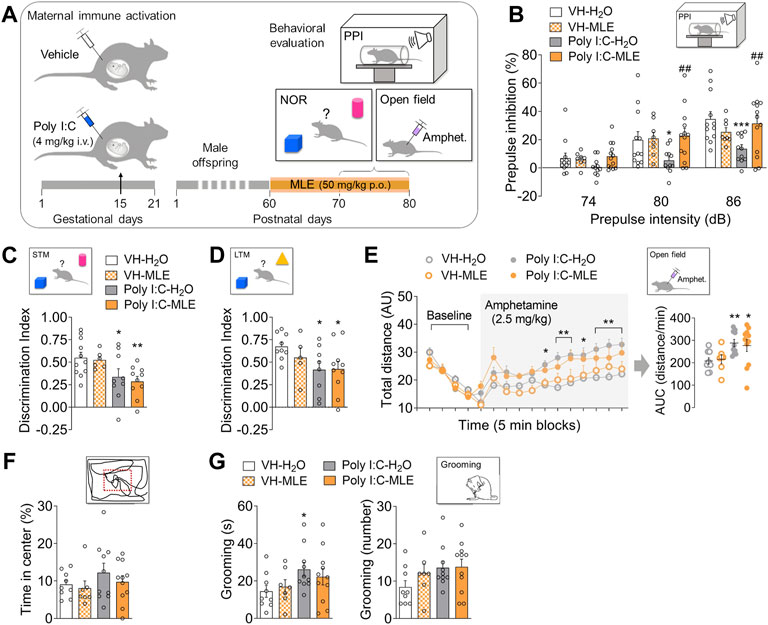Jose Antonio Garcia-Partida, Sonia Torres-Sanchez, Karina MacDowell, Maria Teresa Fernández-Ponce, Lourdes Casas6, Casimiro Mantell, María Luisa Soto-Montenegro, Diego Romero-Miguel, Nicolás Lamanna-Rama, Juan Carlos Leza, Manuel Desco and Esther Berrocoso
There is evidence that in schizophrenia, imbalances in inflammatory and oxidative processes occur during pregnancy and in the early postnatal period, generating interest in the potential therapeutic efficacy of anti-inflammatory and antioxidant compounds. Mangiferin is a polyphenolic compound abundant in the leaves of Mangifera indica L. that has robust antioxidant and anti-inflammatory properties, making it a potential candidate for preventive or co-adjuvant therapy in schizophrenia. Hence, this study set-out to evaluate the effect of mango leaf extract (MLE) in a model of schizophrenia based on maternal immune activation, in which Poly I:C (4 mg/kg) is administered intravenously to pregnant rats. Young adult (postnatal day 60–70) or adolescent (postnatal day 35–49) male offspring received MLE (50 mg/kg of mangiferin) daily, and the effects of MLE in adolescence were compared to those of risperidone, assessing behavior, brain magnetic resonance imaging (MRI), and oxidative/inflammatory and antioxidant mediators in the adult offspring. MLE treatment in adulthood reversed the deficit in prepulse inhibition (PPI) but it failed to attenuate the sensitivity to amphetamine and the deficit in novel object recognition (NOR) induced. By contrast, adolescent MLE treatment prevented the sensorimotor gating deficit in the PPI test, producing an effect similar to that of risperidone. This MLE treatment also produced a reduction in grooming behavior, but it had no effect on anxiety or novel object recognition memory. MRI studies revealed that adolescent MLE administration partially counteracted the cortical shrinkage, and cerebellum and ventricle enlargement. In addition, MLE administration in adolescence reduced iNOS mediated inflammatory activation and it promoted the expression of biomarkers of compensatory antioxidant activity in the prefrontal cortex and hippocampus, as witnessed through the reduction of Keap1 and the accumulation of NRF2 and HO1. Together, these findings suggest that MLE might be an alternative therapeutic or preventive add-on strategy to improve the clinical expression of schizophrenia in adulthood, while also modifying the time course of this disease at earlier stages in populations at high-risk.
Open Access


